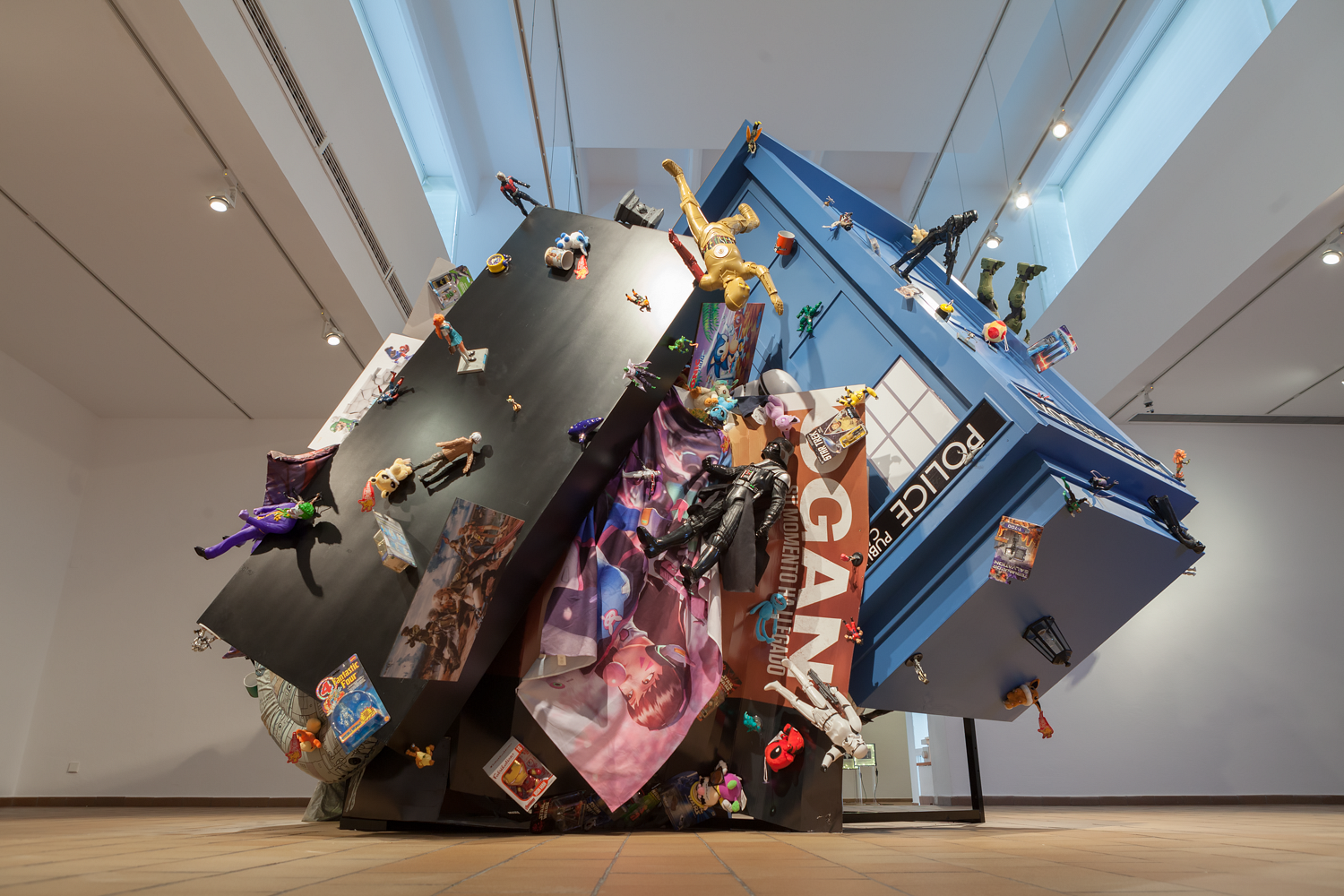June 30–October 1, 2017
The Way Things Go, by renowned Swiss artists Peter Fischli and David Weiss, documents a long chain reaction in which objects and substances interact with each other. To celebrate its 30th anniversary, the Fundació Joan Miró revisits this 1980s classic with the exhibition The Way Things Do. Curated by artist Serafín Álvarez and Fundació Joan Miró’s Martina Millà, the show includes a rescreening of the film and presents new productions by four artists born in the 1980s.
This reconsideration of The Way Things Go is articulated by way of three installations by artists born around the time when Fischli and Weiss produced their legendary film, thus artists belonging to a generation that is marked by the rise of digital culture. According to Millà, The Way Things Do is implicitly “an invitation to wander through the realm of reception as well as a trigger for memories that many visitors may have of the 1980s while also focusing on the relationships that the artists born in that decade may have with 80s’ art.”
Daniel Jacoby (1985, Peru) and Yu Araki (1985, Japan) occupy the first exhibition room with Mountain Plain Mountain, a joint project created with generous support from Arts Council Tokyo, Hangar.org and the Jan van Eyck Academie. The installation stems from their interest in a race track located in the city of Obihiro, Japan. This venue is the last in the world where Ban’ei competitions are still held, a traditional Japanese race in which a jockey leads a draft horse pulling an iron sled through an obstacle course. Jacoby and Araki researched the behind-the-scenes of this sport through an experimental video installed in a mechanical system which allows the screen to move around the exhibition room.
Serafín Álvarez (1985, Spain) presents three works. In the middle of the room, One Step Closer to the Finest Starry Sky There Is, produced with generous support of Hangar.org, is a work that explores the ways fans relate to their favourite fictional worlds through material objects. The result is a large-scale sculpture inspired by a video game, Katamari Damacy, built by assembling a large number of objects. In Creeping Together, a CGI animation, a series of iconic objects from popular fiction that connect different realities morph into one another. Lastly, Bleed features a fully customizable professional video game controller attached to the wall.
Next, the work of Cécile B. Evans (1983, US/Belgium) examines the influence of new technologies in our emotions. The pieces she presents revolve around one of the artist’s former works, shown at Tate Liverpool in 2016, and currently on display at M-Museum Leuven, a theatre piece played by three robots, a water fountain and three pole dancers, which react to a series of images shown on a multiscreen system. Now, in Leaks, Evans presents an audiovisual installation that includes a video recording of that theatre piece that delves into the relationship between physical and digital objects in motion.
All three installations lead the visitor to the last room, where the original film by Fischli and Weiss is screened with generous support of Pro Helvetia.
The Way Things Do includes the publication of a catalogue in Catalan, Spanish and English featuring an introduction by Rosa Maria Malet, curatorial texts by Serafín Álvarez and Martina Millà, an essay by Margarida Mendes and photographs of the works on display. The publication will be launched on July 20 at 7pm at Fundació Joan Miró, with a live concert by Roc Jiménez de Cisneros.


